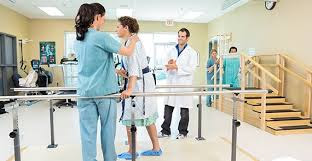Depression
When we hear
the word ‘’health’’ we remember physical fitness, but we need physical fitness
as well as mental fitness for a healthy life.
A mental illness is not something to
hide or be ashamed of…
It is more
important to pay attention to mental illnesses than the care we take for
physical illnesses. A mental illness can do more serious damage to people than
a physical illness.
Depression is the leading cause of disability in the
world. More than 264 million people are suffering from Depression in the world.
But because it's a mental illness, it can be a lot
harder to understand than, say high cholesterol.
One major source of confusion is the difference
between having depression and just feeling depressed. Almost everyone feels
down from time to time. Getting a bad grade, losing a job, having an argument,
even a rainy day can bring on feelings of sadness.
Sometimes
there's no trigger at all. It just pops up out of the blue. Then circumstances change,
and those sad feelings disappear.
Clinical depression is different. It's a medical disorder,
and it won't go away just because you want it to.
It lingers for at least two consecutive weeks and
significantly interferes with one's ability to work, play, or love.
- Sad feelings that continue to last
- low mood
- Anger
- poor concentration
- loss of interest in daily activities and hobbies
- difficulty of focusing on one thing,
- Forgetting things and difficulty in making decisions.
- feeling worthless or excessively guilty,
- sleeping either too much or too little,
- restlessness or slowness,
- Loss of energy and feeling tired.
- Having some physical symptoms like headache, pains in the body, inflammation of the stomach and etc...
- Recurrent thoughts of suicide, trying to commit suicide.
It can be depressive to
have some of these symptoms lasting for more than two weeks. If you have at least five of those symptoms, according to psychiatric guidelines, you qualify
for a diagnosis of depression.
Present depressive
disorder means that the above symptoms are increasing and continuing for two years
or more.
If there are symptoms like seeing the
things that others don’t see, hearing invisible hallucinations (visual and
auditory hallucinations), deceiving the illusional ideas (delusions) beyond reality, it can be “Psychotic Depression”.
✅ Reasons for
Depression…
✔️Chemical changes in the brain,
✔️genetic effects,
✔️environmental factors,
✔️mental factors
✔️loneliness
✔️unemploymemt
✔️uncaring relationship
✔️stressful home environment can be the
cause of this disease.
🔺Depression isn’t only for those who have failed,but have broken expectations. People who have been very successful in their subject fields can also have this disease.
This mental condition can be caused by things like over
busy.
And it's not just behavioral symptoms. Depression has
physical manifestations inside the brain.
First of all, some changes could be seen
with the naked eye and X-ray vision. These include smaller frontal lobes and
hippocampal volumes. On a more micro-scale, depression is associated with a few
things: the abnormal transmission or depletion of certain neurotransmitters, especially
serotonin, norepinephrine, and dopamine blunted circadian rhythms, or specific
changes in the REM and slow-wave parts of your sleep cycle, and hormone
abnormalities, such as high cortisol and deregulation of thyroid hormones.
But neuroscientists
still don't have a complete picture of what causes depression. It seems to have
to do with a complex interaction between genes and the environment, but we don't
have a diagnostic tool that can accurately predict where or when it will show
up.
And because depression symptoms are intangible, it's hard
to know who might look fine but is actually struggling. According to the
National Institute of Mental Health, it takes the average person suffering from
a mental illness over ten years to ask for help.
But there are very effective treatments. Medications
and therapy complement each other to boost brain chemicals.
In extreme cases, electroconvulsive therapy, which is
like a controlled seizure in the patient's brain, is also very helpful. Other
promising treatments, like Trans cranial magnetic stimulation, are being
investigated, too. So, if you know someone struggling with depression,
encourage them, gently, to seek out some of these options. You might even offer
to help with specific tasks, like looking up therapists in the area or making
a list of questions to ask a doctor. To someone with depression, these first
steps can seem insurmountable. If they feel guilty or ashamed, point out that
depression is a medical condition, just like asthma or diabetes. It’s not a
weakness or a personality trait, and they shouldn't expect themselves to just
get over it any more than they could themselves to get over a broken arm.If
you haven't experienced depression yourself, avoid comparing it to times you've
felt down.
Comparing what they're experiencing to normal,
temporary feelings of sadness can make them feel guilty for struggling. Even
just talking about depression openly can help. For example, research shows that
asking someone about suicidal thoughts actually reduces their suicide risk. Open
conversations about mental illness help erode stigma and make it easier for
people to ask for help. And the more patients seek treatment, the more
scientists will learn about depression, and the better the treatments will get.
Have you ever heard the term, smiling depression?
High-functioning depression or hidden depression? As these names may imply,
this is when a clinically depressed person tries to keep their depression a
secret from others;
They often appear cheerful, successful, and seemingly put together...leading you to the belief that their lives are perfectly happy, fine, and without mental illness. Is there someone you think might be secretly depressed?
Look out for these 8 telltale signs that they might have hidden depression.
1:
They feel emotions on a much deeper level.
Does your friend become emotionally volatile in
response to a simple question or comment? Those who are secretly depressed will
often feel things more intensely than usual because of how much they bottle up inside.
They’re more susceptible to crying, getting upset, or even having a
full-fledged breakdown because they feel overwhelmed with the depths of all of
their emotions. This swings both ways, being more affectionate and loving
towards others while also more easily angered and saddened.
2:
They're less positive and optimistic.
Does your loved one, who used to be so easygoing and
light-hearted...become cynical and pessimistic? They might be internally
struggling with a lot of dark thoughts they are too afraid to share. They may
adopt a more nihilistic point of view and become less positive and optimistic
than you're used to them being.
3:
They're obsessed with being the best.
Depression, hidden or not, is often a thief that robs
us of our ability to enjoy the simple pleasures of life. People with concealed
depression will often throw themselves into their work to find meaning
in their lives and make sense of their suffering. By overworking themselves,
they get a sense of reprieve from their depression and distract themselves
from all the negativity that they feel.
4:
They have sudden mood swings.
Depression isn't always gonna look like sadness, Sometimes
depression manifests as anger, irritability, and sudden mood changes.
Depression makes feeling happy and even enjoying things they used to
love...incredibly difficult. Their response is a tendency to lash out and
become emotionally unhinged. There’s just too much rage and desperation for
them to suppress. So, like a volcano, they let it erupt and throw tantrums.
5:
They've started abusing drugs or alcohol.
Occasional recreational drug use and drinking are
fairly common; However, the red flag for hidden depression starts to wave when
it stops being occasional and becomes regular and then turns into
dependence.
The Anxiety and Depression Association of America, (or
A.D.A.A.), found that approximately one in every five people who are depressed,
also had a substance use disorder.
6.
They're always out of it lately.
Is your usually punctual friend suddenly forgetting
your lunch dates? Does your friend zone out more often than usual when you're
talking to them? Difficulty concentrating and remembering is one of the
symptoms of depression. The depressed person often has a hard time keeping
their train of thought and struggles with finishing tasks affecting their
grades or work performance. They have difficulty with decisions and remembering
recent events. They may even start to speak and move more sluggishly as a
result.
7:
They feel bad about asking for help.
Does your friend tell you something's wrong, but then
waves it away saying it's just silly or unimportant and they'll just deal with it
on their own. When someone's trying to conceal their depression from others, they'll
often send subtle cries for help that they immediately take back. They
apologize for asking for help, even when they're struggling, and never want to
burden anyone else with what they're going through, and
8:
They always TRY to look or act happy.
Do you know someone who's constantly smiling and cheerful?
Usually denying that something is wrong, even when you know, there is. They
won't let others see them cry, or be sad so, they make up excuses about why
they can't see you much usually when they think no one else is looking the
facade will be dropped and you'll see things aren't okay. Those with depression
won't always show the symptoms commonly associated with the condition. Does
this bring anyone to mind? Because of the negative stigma surrounding mental
illness, many patients often feel the need to keep their struggle a secret for
fear that they'll be judged shamed, or mistreated for their illness. If you know
someone who you suspect is secretly depressed, you can do them a solid and show
your support by reaching out to them, this may help them move towards getting
the professional mental health care they need to improve.
- Meet a psychologist and talk about your all the problems and symptoms
- Share your sad feelings with a trusted person every time you can
- Avoid drugs and alcohol as much as possible.
- Get proper sleep and food.
- engage in short exercises.
- Spent time with family members and friends.
- Listen to the music.
- Try to do some meditation
- Try to focus on your daily works as much as possible. If it is hard to do, try to do small things first.
- Try to understand the true nature of life.
- Live a balanced life by getting away from the feeling that sad things happen only to yourself.

































